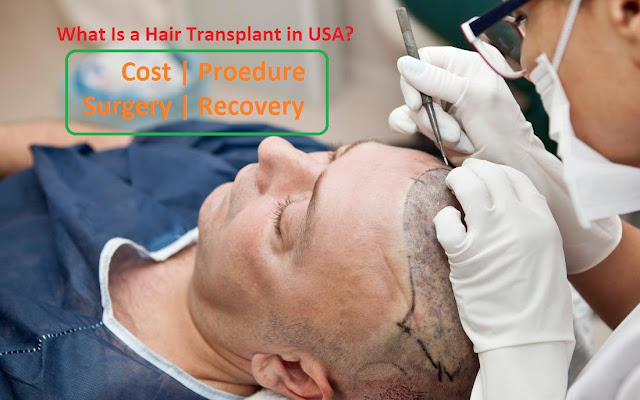Types of Corrective Eye Surgery: Which one is right for you?
Are you tired of wearing glasses? If yes, then LASIK surgery is the ideal solution for you. The best part is that unlike other surgeries which may require more time, LASIK surgery is completed in a few minutes without much pain.
 |
| Corrective Eye Surgery Types |
Wearing contacts and glasses can be cumbersome for some people, and can have a negative impact on their active lifestyle. Many people are opting to have their vision handled in a more permanent way.
Medical Review USA - An leading health listing sites share types of corrective laser eye surgery in USA woth proper details & guidlines. Corrective Eye Surgery - Checkout the types of refractive laser eye surgery in USA, laser in-situ keratomileusis) · Photorefractive keratectomy (PRK) · Radial keratotomy (RK) · Astigmatic keratotomy (AK) & more.
In recent years eye specialists have made incredible progress in vision correction surgery, also known as refractive and laser eye surgery. There are several types of vision correction surgery. Most procedures work to reshape the cornea so that the light passing through it can focus on the retina. Other surgeries replace the lens of the eye.
Different Types of Corrective Surgery
Here are the different types of corrective surgery, what they improve, and how they work.
LASIK (Laser In-Situ Keratomileusis)
This surgery reshapes the underlying corneal tissue to focus light into the eye and reach the retina. This procedure is ideal for patients who have nearsightedness, farsightedness or astigmatism. What makes LASIK unique is its functionality. Eye surgeons create a flap of the outer layer of the cornea to access the underlying tissue. The procedure requires precision, and advances in computer imaging technology allow LASIK specialists to create detailed corneal images and guide treatment.
PRK (Photorefractive Keratectomy)
PRK is a procedure that uses a laser to reshape the cornea. Unlike LASIK, PRK only reshapes the surface of the cornea. It is ideal for mild to moderate myopia, farsightedness, or astigmatism. PRK can also work with computer imaging technology.
LASEK (Laser Epithelial Keratomileusis)
This procedure is a slight variation of PRK. The doctor will create a flap where the epithelial cells are loosened by applying an alcohol solution. Then, a laser reshapes the cornea and the flap is set and secured with a soft contact lens so that it can heal around the correction. LASEK treats myopia, farsightedness and astigmatism.
ALK (Automatic Lamellar Keratoplasty)
ALK can help people with severe myopia and some levels of farsightedness, although LASIK has replaced ALK as a method of correction. For this procedure, an eye specialist creates a flap in the cornea to access the underlying tissue. No laser is used, and instead, doctors make an incision in the sub-layer of the cornea to reshape and correct vision.
RLE (Refractive Lens Exchange).
RLE is a procedure to correct cataracts. The doctor makes a small incision at the edge of the cornea to remove the eye's natural lens. Lenses are replaced with silicone or plastic lenses. This procedure is also known as CLE (clear lens extraction) or RLR (refractive lens replacement) and can be used to correct severe farsightedness or nearsightedness. It is also used to cure thin cornea, dry eyes and other minor eye problems. Additional procedures may be needed to correct astigmatism.
Epilasic
The epilassic process is very similar to that of PRK. Doctors detach a thin layer of the cornea and then reshape it. The layer can be removed or replaced. The doctor completes the procedure by applying a soft contact lens to protect the area until it heals completely.
PRELEX (Presbyopic Lens Exchange)
If the lens of the eye loses its flexibility, this condition is called presbyopia. Patients with presbyopia have difficulty focusing on nearby objects. PRELEX is a procedure in which the eye doctor implants a multifocal lens to improve flexibility and restore focus.
Intake
Intake is also known as intracorneal ring segment (ICR). For this procedure, the doctor makes a small incision in the cornea. Two crescent shaped plastic rings are placed on the outer edge to flatten the cornea. The flattened cornea allows light rays to change the way they focus on the retina. ICRs have been replaced by laser-based procedures to treat mild myopia.
Phakic Intraocular Lens Implant
Some patients who are too close for PRK and LASIK require Phakic Intraocular Lens Implants. For this procedure, the doctor inserts an implant through a very small incision on the side of the cornea that attaches to the iris behind the pupil. The natural lens of the eye remains in place.
AK (Astigmatism Keratonomy)
AK is a surgery that corrects astigmatism without the use of a laser. People with astigmatism have a cornea that is shaped like a football, and this surgery corrects it by making one or two incisions in the sharpest part of the cornea. After the incision, the cornea relaxes and takes on a more rounded shape. AK can be done alone or in conjunction with other laser eye surgery.

Comments
Post a Comment